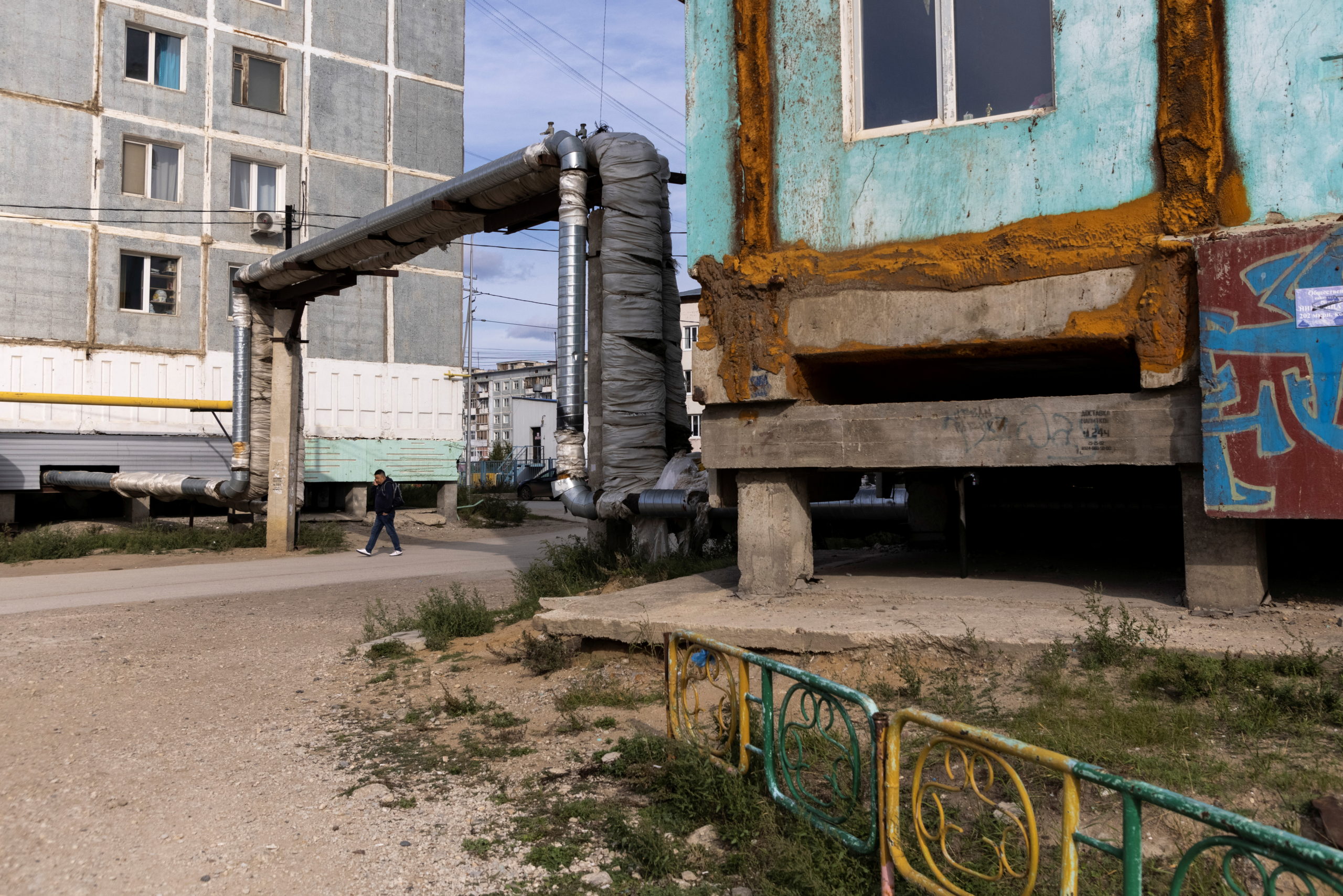Permafrost thaw will make radon a bigger threat to Arctic residents, a new study says
Thawing soil can release built-up stores of the gas, increasing levels as much as 100-fold.

Thawing permafrost threatens to expose residents of the far north to high levels of radon, a gas that can cause lung cancer, warns a new study by British and Canadian scientists.
Radon, a naturally occurring gas in soils, is effectively trapped in the ground by intact permafrost, with only 10 percent of levels able to escape, the study said. But when permafrost is thawed, those built-up stores or radon are set free and releases can increase 100-fold, pouring dangerous levels into home basements and other structures in direct contact with the ground, the study said.
Radon levels could remain above the danger threshold for up to seven years, the study said.
The study, by scientists from the University of Leeds and the Quebec research company Geostack, was published in the journal Earth’s Future.
There have been other warnings of increased radon-exposure risks from permafrost thaw, including from the Russian Academy of Sciences.
The new study advances the research by using modeling to calculate radon movement and risks in structures.
It also provides guidance for avoiding health risks. Structures on stilts, the study found, will not be affected by thaw-related radon leaks. And better ventilation to clear indoor spaces “is all that is often required if the problem is recognized,” the study’s lead author said in a University of Leeds news release.
“Our results show clearly that the pent-up reservoir of radon can be released into the basements of buildings over a long period and will remain above radiation action levels for four to seven years,” University of Leeds petrophysics professor Paul Glover said in the statement.
“Since there has been no perceived historical radon problem in these communities and the gas itself is undetectable without specialist devices, we regard this as an important and totally avoidable threat to the health of the northern communities,” Glover said.
Radon is a naturally occurring radioactive gas, ubiquitous in the Earth’s crust, according to the Environmental Protection Agency. Since radon is a product of uranium decay, it exists in places with relatively high uranium levels.
The existence of permafrost — and its thawing condition — makes Arctic and subarctic residents especially vulnerable to radon exposure. And there are other factors increasing vulnerability in the Arctic. Those factors include a cold climate that keeps people indoors more than in the south, poor ventilation in houses that might be designed to hold in heat and high rates of cigarette smoking, as has been documented in Canadian Inuit regions and in northern Alaska, for example.
Glover, in the University of Leeds statement, characterized smoking and radon exposure as a lethal combination.
“Radon is known to be the second most important cause of lung cancer after smoking. Smoking also exacerbates radon-acquired lung cancer rates by about 26 times, and smoking is up to 4.4 times more prevalent in Arctic communities,” he said.
In Alaska, radon has emerged as a serious concern in places like Fairbanks, where permafrost is discontinuous and on the thaw threshold, said Art Nash, a radon expert at the University of Alaska Fairbanks Cooperative Extension Service.
The porous soils that are common in Alaska give radon a pathway out of the earth, Nash said.
“Radon is a very wimpy gas. It’s kind of like a weasel,” he said. But it is very pervasive, and home location and design should consider radon exposure risks, he said.
“If I were to build a house, my concern would be on former permafrost,” he said.
As the newly published study showed, an effective radon-safety strategy is to put houses on stilts or pilings so that the radon releases stream into the atmosphere and dissipate instead of collecting indoors, Nash said.
“You want cold air swirling below,” he said.
However, many owners of homes on stilts sometimes take steps that compromise that radon safety, he said. it is common in parts of Alaska for owners of raised homes to seal up that space — something that reduces heating costs but increases radon risks. “They see a big gaping hole and expensive energy costs,” he said.
The Alaska Division of Geological and Geophysical Surveys distributes radon test kits and is tracking levels in households. However, data for the state is sparse, giving an incomplete picture, according to the division.